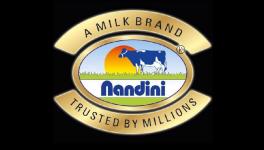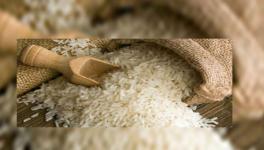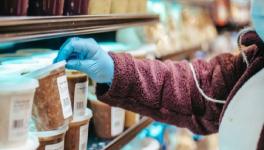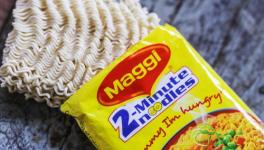Can Big Ads and Tall Claims Guarantee Purity of Honey? No, Reveals Test

For its numerous health benefits and as a natural sweetener, honey has been consumed for ages. But the various brands of honey that we get nowadays may not bring the health benefits traditionally assigned to it. Recent tests done on ten leading brands by ‘Consumer Voice’, a Delhi based NGO (non-governmental organisation) working on consumer rights, reveal that the brands don’t comply with the safety measures they ought to.
The tests done by Consumer Voice were aimed to find out the level of adulteration on 10 most used brands that supply honey to the market. The report says that except Zandu, all other brands have mixed C4 sugar levels exceeding the permissible level. None of the brands tested conform to the purity and authenticity requirements as directed by the new notification of Food Safety and Standards Authority of India (FSSAI). The tests were conducted at a National Accreditation Board for Testing and Calibration Laboratories (NABL) accredited laboratory.
The test programme, as declared by Consumer Voice in its report, was developed as per the parameters listed in the national standards—that is, FSS regulation (new notification 31/7/2018), Indian Standard and Agmark.
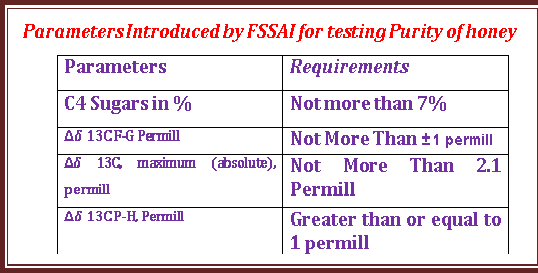
Ashim Sanyal, Chief Operating Officer (COO) of Consumer Voice, told NewsClick, “In India purity testing on honey is not done normally. But FSSAI in their recent notification brought out certain parameters to be considered regarding the measuring of the purity of honey and the food business operators have to comply with the requirements of the revised standards from 1/1/2019. This is the first of its kind test done on honey purity.” He also said, “The possible health issues that honey adulteration may bring are also worrying. We have tested for the presence of sugars added and our tests are performed in accordance to the AOAC’s (Association of Analytical Communities) globally accepted norms. Adulteration can result in serious health issues like diabetes.”
LEADING BRANDS THAT WERE CONSIDERED FOR THE TESTS:
Top 10 brands were taken for the tests:
PARAMETERS FOR TESTS
Testing honey for its purity means finding out the elements which are used for adulteration and the level of adulteration that it contains. The commonly used substances for mixing in honey that make it impure are glucose, dextrose, molasses, sugar syrup, corn syrup or any other similar product.
The test parameters were chosen to examine the purity of honey which are in compliance with the international norms and also as suggested by FSSAI recently. These test parameters are primarily aimed to find out the sugar and similar additives in honey.
Apart from these parameters, the Consumer Voice tests took several other parameters for the purity testing- the fructose-glucose ratio, total reducing sugars, hydroxymethylfurfural (HMF), total energy value, moisture content, total plate count, antibiotics, acidity, specific gravity, optical density, water-insoluble matter and ash.
All the parameters have a permissible value in any honey sample recommended by FSSAI. Exceeding the upper limit of these parameters in honey may have adverse effects on health.
C4 Sugars: Bees collect nectar from flowering plants. The nectar is converted to honey with the help of some enzymes produced by the bees. The final form of honey we get is produced by elaborate enzymatic reactions inside the honeycomb.
The flowering plants that the bees collect the nectar from are the C3 plants. C3 plants are those that use the C3 pathway to do photosynthesis.
When honey is found to contain lots of C4 sugars, it is meant that the honey sample is mixed with sugars like that of cane sugar or corn sugar. Canes and corns are C4 plants—that use a different pathway to do photosynthesis—the C4 pathway. Taking extra sugars can cause the blood sugar level to increase, the hallmark of diabetes.
The other tests, apart from the C4 sugar level also revealed that none of the ten brands can be classified as provider of pure honey.
Failure of all the top brands to provide pure honey is worrisome. Whatever we are taking in the name of pure honey going by the big ads and the tall claims, are not pure and may be affecting our health adversely.
The other parameters including the fructose-glucose ratio, total reducing sugars, hydroxymethylfurfural (HMF), total energy value, moisture content, total plate count, antibiotics, acidity, specific gravity, optical density, water-insoluble matter and ash, were found to be under the permissible level in the Consumer Voice tests.
Get the latest reports & analysis with people's perspective on Protests, movements & deep analytical videos, discussions of the current affairs in your Telegram app. Subscribe to NewsClick's Telegram channel & get Real-Time updates on stories, as they get published on our website.












